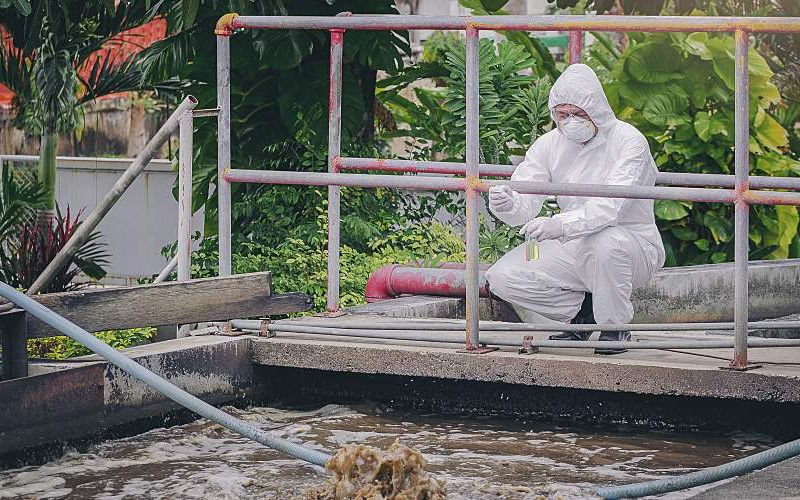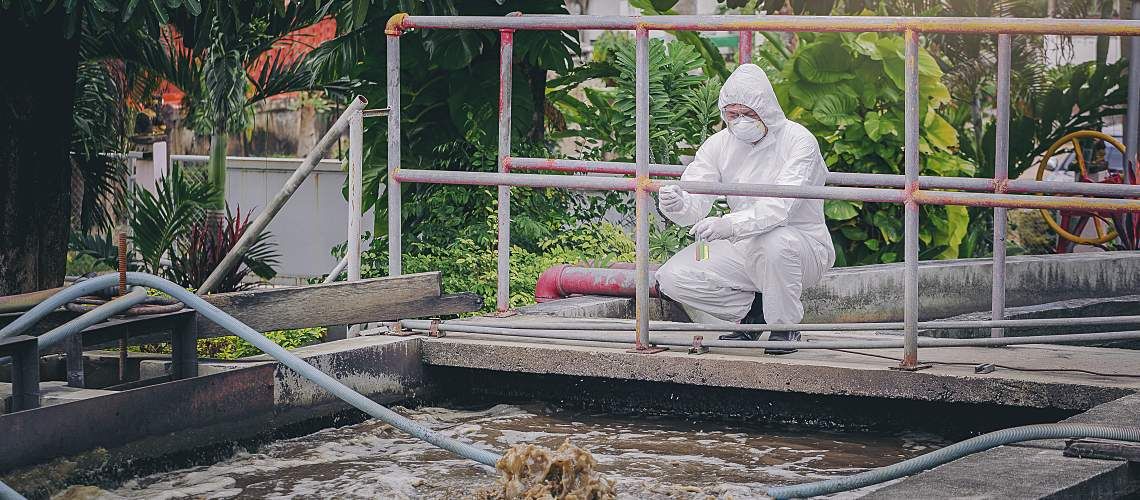Wastewater Surveillance Expands to New Pathogens and Substances


In late September 2022, COVID-19 was spiking in Massachusetts, according to Boston.com. The uptick in numbers became obvious not from hospital cases or clinical testing but from wastewater surveillance by the Massachusetts Water Resources Authority. Before people develop symptoms—or even if they never do—early warning signs of COVID-19 can be detected in virus shedding, according to the Centers for Disease Control and Prevention (CDC). That shedding shows up in wastewater.
Testing untreated wastewater also provides helpful information on community trends. Comparing levels of SARS-CoV-2 virus over time offers insight into the severity of outbreaks and the need for precautions—like getting vaccinated and boosted, wearing masks, testing before and after large gatherings, or isolating when sick or positive.
Now, public health officials and labs are taking wastewater monitoring one step further in an effort to detect other pathogens and substances prevalent in a community. Ultimately, these techniques may lead to healthier communities.
This article takes a closer look at the National Wastewater Surveillance System (NWSS) tracking beyond SARS-CoV-2 and the evolving field of wastewater epidemiology.
Growing the NWSS
In September 2020, the CDC established the NWSS to support wastewater surveillance and related activities. The goal was to build the country's capacity to track the presence of SARS-CoV-2 virus in wastewater by working with local health departments.
Wastewater surveillance is widely applicable, given that municipal wastewater collection systems serve nearly 80% of U.S. households. In addition, determining a community's infection status doesn't require that individuals visit the doctor or get tested at a clinic.
By October 2022, the NWSS included more than 1,250 sites, according to the CDC. More than 90,000 samples had been collected from wastewater systems serving about 40% of the U.S. population.
Eligible jurisdictions can acquire funding for wastewater surveillance through the CDC's annual Epidemiology and Laboratory Capacity opportunity. Now, the CDC is expanding these efforts to include other pathogens and substances.
Monitoring Beyond COVID-19
Beginning in September 2022, the CDC planned to detect the polio virus in communities at the greatest risk for this rare but life-threatening and disabling disease.
The need for federal surveillance of wastewater for polio became apparent after the first U.S. case in a decade was discovered in Rockland County, New York, in July 2022. Monitoring in nearby communities also showed the presence of poliovirus. This tracking gives public health officials the chance to detect the 99% of polio cases that don't show symptoms specific to polio.
In addition, the CDC expanded its wastewater surveillance to include monkeypox through collaboration with Biobot Analytics, a Boston-based lab. Analysis of the viral disease will now be available to hundreds of communities through the NWSS.
Moving Toward Epidemiology
Aside from its work for the CDC, Biobot also analyzes wastewater for the presence of high-risk substances such as opioids. This monitoring helps communities better respond to substance use and prevent overdoses.
Biobot notes numerous opportunities to transform wastewater monitoring into wastewater-based epidemiology, which can be used as a public health tool. Any pathogen with an identifiable biomarker in stool or urine can likely be tested using wastewater—both the presence and the amount circulating in the community.
A literature review by Biobot shows about 80 relevant pathogens, including gastrointestinal pathogens like E. coli and norovirus and respiratory pathogens like SARS-CoV-2 and influenza. A single sample can uncover diseases among populations with thousands to millions.
Emerging Ethical Concerns
As wastewater monitoring evolves, it has the potential to become a valuable tool to detect and track infectious diseases and improve the health of communities in an effective and equitable way.
But as use narrows from identifying outbreaks to finding specific carriers of disease, ethical issues surrounding surveillance arise. For example, health officials might be interested in tracking and containing a particularly dangerous variant of a virus from a city sewer to a specific household. In such cases, personal rights versus the threat to public health may increasingly come under scrutiny.
